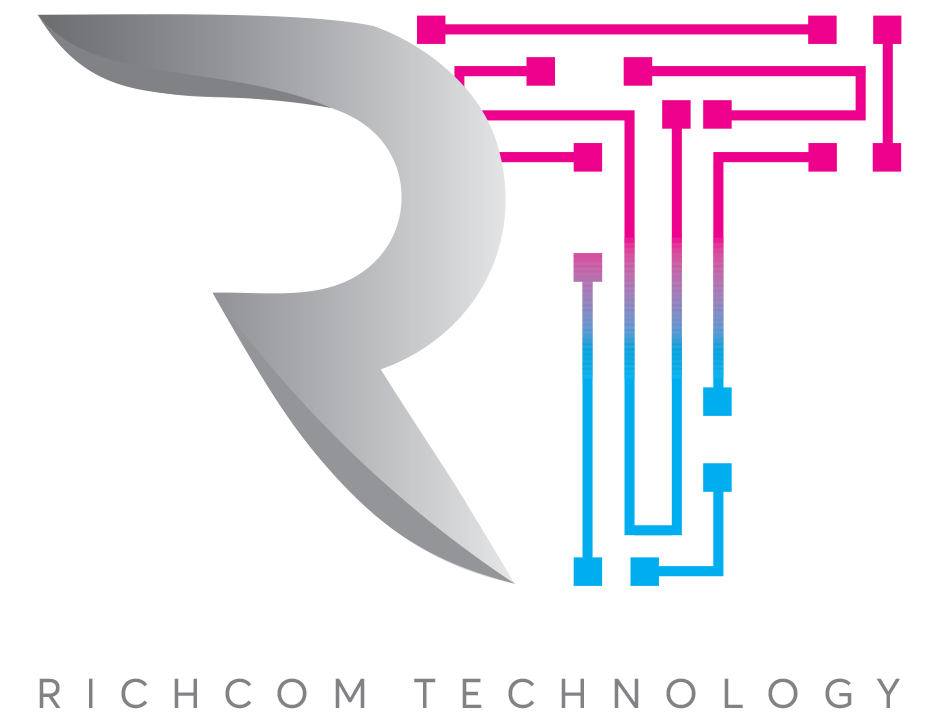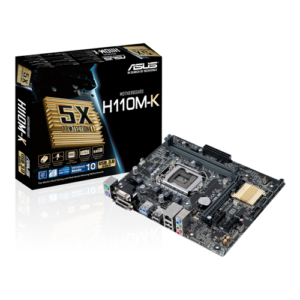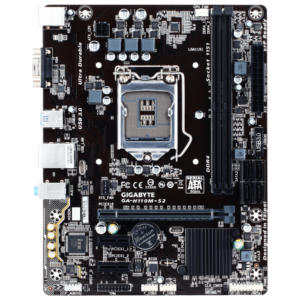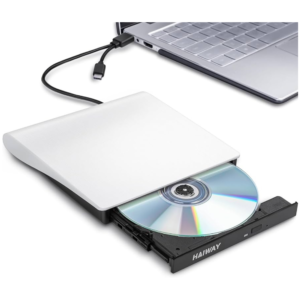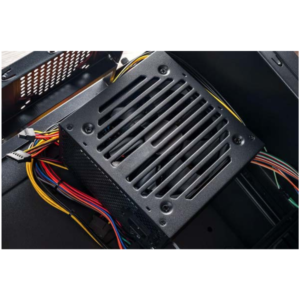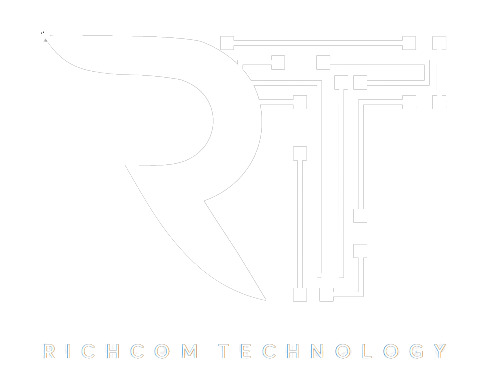The article explores the market dynamics of 7th generation motherboards in Sri Lanka.
It delves into their features, specifications, and the intricacies of installation and maintenance.
Two specific models, the Asus H110M-K and Gigabyte H110M-S2, are examined in depth, providing a comprehensive overview of this key component within Sri Lanka’s burgeoning technological landscape.
The Market for 7th Gen Motherboards in Sri Lanka
The market for 7th Gen motherboards in Sri Lanka is experiencing significant growth, driven by increased demand for high-performance computing hardware. The advancements in technology and the shift towards digital infrastructure in various sectors have necessitated such a growth. Furthermore, the rising interest in gaming and data-intensive operations has propelled the demand for motherboards with advanced features and superior performance.
The growth of the information technology (IT) sector in Sri Lanka is a significant contributor to this surge in demand. With the sector’s expansion, there has been a corresponding increase in the need for robust hardware to support the sophisticated software applications being developed and used. Subsequently, this has led to a rise in the demand for 7th Gen motherboards, known for their high-speed performance and enhanced features. For more 7th Gen Motherboard Prices in Sri Lanka.
Another factor contributing to this growth is the expanding gaming industry. The latest video games require high-performance hardware for smooth, uninterrupted play. The 7th Gen motherboards, with their superior graphics handling and faster processing speeds, meet these requirements, leading to a rise in their popularity among gamers.
Features and Specifications of 7th Gen Motherboards
Features and specifications of these high-performing platforms include advanced memory capabilities, enhanced connectivity options, and robust security measures. These motherboards are designed to support high-speed DDR4 memory, allowing for optimal system performance and faster application loading. The connectivity options offered by these platforms are vast, with support for multiple USB 3.1 ports, HDMI, DisplayPort, and even Thunderbolt for the fastest possible data transfer rates.
Furthermore, 7th Generation motherboards are equipped with advanced security features to protect system integrity and user data. These include hardware-based security features such as Trusted Platform Module (TPM), which securely stores cryptographic keys, and BIOS Guard, an advanced hardware-based anti-virus technology. This technology protects the motherboard from malicious software attacks ensuring the system’s safety.
In addition to these, the 7th Gen motherboards provide support for multiple graphics cards, offering enhanced visual performance for demanding tasks like gaming and video editing. They also feature high-definition audio codecs for superior sound quality.
Moreover, these motherboards are designed with energy-saving technologies and have thermal solutions to ensure a cool and stable system operation, thus enhancing system longevity. The BIOS interface offered by these platforms is user-friendly, allowing for easy system setup and customization.
Installing and Maintaining a 7th Gen Motherboard
Installation and maintenance of advanced computer platforms requires careful attention to manufacturer instructions and regular system checks to ensure optimal performance and longevity. When dealing with a 7th Gen Motherboard, several specific steps must be adhered to in order to prevent system failure or damage to the components.
The installation process involves:
– Preparing the computer case: Removing any previous components and ensuring the case is clean and free of dust.
– Installing the CPU: This involves aligning the CPU with the socket on the motherboard and gently lowering it into place.
– Installing the RAM: The RAM slots must be unlocked before the RAM is inserted, ensuring it is aligned correctly with the slot.
Once installation is completed, maintenance becomes crucial. The following steps are recommended:
– Regularly dusting the interior of the computer case: Dust can obstruct airflow and cause components to overheat.
– Checking for updates: Regular system updates can help to optimize performance and fix any bugs or software issues.
– Backing up data: Regularly backing up data can help to prevent data loss in the event of a system failure.
The longevity and performance of a 7th Gen Motherboard greatly depends on the care and attention given during installation and throughout its lifespan. By following these steps, one can ensure a smooth, efficient functioning of the computer system and extend the operational life of the hardware.
Asus H110M-K Motherboard
Asus H110M-K represents a robust and reliable computer platform, designed to support 6th and 7th generation Intel processors, with built-in features such as DDR4 memory compatibility and advanced hardware safeguards for enhanced system protection. This motherboard is equipped with a user-friendly UEFI BIOS and a USB 3.0 BOOST, providing higher data transfer speeds. In addition, it includes an integrated DVI-D port for high-definition visual output.
In terms of performance, the Asus H110M-K delivers with its 5X Protection II feature, an advanced circuit design that ensures comprehensive component longevity. It is further equipped with LANGuard and overvoltage protection, which provide improved network performance and stable power supply respectively. These features combine to provide exceptional durability and long-term system reliability.
The Asus H110M-K also supports the latest high-speed memory types, showing compatibility with DDR4 memory modules. The motherboard’s DDR4 support provides faster data transfer rates and increased bandwidth, resulting in superior performance. Furthermore, the motherboard is designed to support 6th and 7th generation Intel processors, ensuring high-speed processing and smooth system performance.
Gigabyte H110M-S2 Motherboard
Gigabyte H110M-S2 is a high-quality computer platform, designed to support Intel’s 6th and 7th generation processors, with attributes such as DDR4 memory compatibility and advanced hardware safeguards for comprehensive system protection. This motherboard, produced by Gigabyte Technology, a Taiwanese manufacturer and distributor of computer hardware, exhibits superior performance and a robust system stability.
Key features of the Gigabyte H110M-S2 motherboard include:
– **Processor Support**:
– Supports 6th and 7th Generation Intel Core Processors
– Includes an LGA 1151 socket for versatile CPU compatibility
– **Memory and Storage**:
– DDR4 Memory compatibility up to 2133 MHz speed
– Features dual memory slots, supporting up to 32GB of RAM
– Provides multiple SATA interfaces for storage devices, offering versatile options for data storage and retrieval
– **Advanced Protection Features**:
– Incorporates an anti-sulfur resistor design for longevity
– Utilizes a humidity protection glass fabric PCB to resist moisture
– Includes high temperature protection with features such as an all-solid capacitor design and low resistance MOSFETs
These factors combine to create a computer platform that offers advanced performance, broad compatibility with a range of processors, and robust protection against common environmental hazards. Such attributes, when combined with Gigabyte’s reputation for quality and innovation, make the H110M-S2 a notable choice for system builders seeking a dependable motherboard for 6th and 7th generation Intel processors.
Conclusion
In conclusion, the market for 7th Gen motherboards in Sri Lanka is thriving, with Asus H110M-K and Gigabyte H110M-S2 being popular choices. These motherboards boast impressive features and specifications, requiring careful installation and maintenance.
Harnessing the power of these advanced technologies can lead to enhanced computing abilities and overall performance. Therefore, understanding their intricacies is paramount for maximizing their potential.
